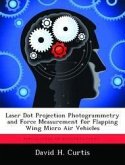Micro Air Vehicles (MAV) are a subset of Unmanned Aircraft (UAS) that are up to two orders of magnitude smaller than manned systems. Near-Earth environments, such as forests, caves, tunnels and urban structures make reconnaissance, surveillance and search-and-rescue missions difficult and dangerous to accomplish. Therefore, MAVs are considered ideal for these types of missions. However, the data using full size aircraft is inadequate to characterize miniature aircraft parameters due to the lower Reynolds numbers and low aspect ratio (LAR) wings and impact of wing-propeller interactions. The main objectives of this research were to: collect and synthesize the available data/tools; create a statistically integrated database/tool set of MAV designs for conceptual design trades; validate the tool set using published experimental data; synthesize and model a prototype design using conceptual and empirical analysis; highlight MAV-specific design criteria and identify gaps in existing data for later research.








